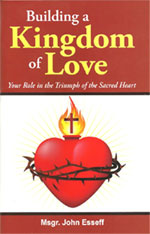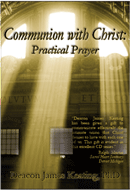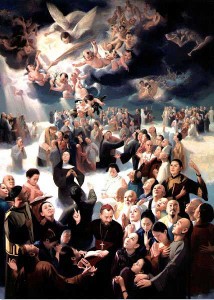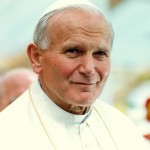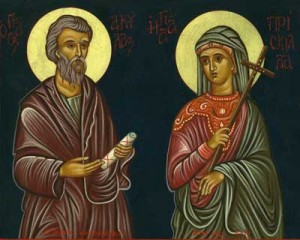[powerpress]
Tags: catholic, catholic podcast, catholic prayer, cathollc spirituality
This entry was posted on Saturday, July 14th, 2012 at 2:58 pm
You can follow any responses to this entry through the RSS 2.0 feed.
[powerpress]
Tags: catholic, catholic podcast, catholic prayer, cathollc spirituality
This entry was posted on Saturday, July 14th, 2012 at 2:56 pm
You can follow any responses to this entry through the RSS 2.0 feed.
[powerpress]
Tags: catholic, catholic podcast, catholic prayer, cathollc spirituality
This entry was posted on Saturday, July 14th, 2012 at 2:15 pm
You can follow any responses to this entry through the RSS 2.0 feed.
[powerpress]
Tags: catholic, catholic podcast, catholic prayer, cathollc spirituality
This entry was posted on Saturday, July 14th, 2012 at 1:05 pm
You can follow any responses to this entry through the RSS 2.0 feed.
Kaia’tanó:ron – Blessed
Kateri Tekakwitha
Gah-deh-lee   Deh-gah-quee-tah
Flower of the Algonguins – Lily of the Mohawks
1656-1680
Feast Day
July 14 in the United States
Blessed Kateri, you are revered as the mystic of the American wilderness. Though orphaned at the age of four, and left with a scarred face and damaged eyesight from illness, you were esteemed among the Mohawk tribe. When you asked to be baptized a Christian, you subjected yourself to abuse by your people and were forced to run away. You endured many trials but still flowered in prayer and holiness, dedicating yourself totally to Christ. I ask you to be my spiritual guide along my journey through life. Through your intercession, I pray that I may always be loyal to my faith in all things. Amen.
Tags: blessed kateri Tekakwitha, catholic, catholic podcast, catholic prayer, cathollc spirituality, lily of the mohawks
This entry was posted on Saturday, July 14th, 2012 at 7:41 am
You can follow any responses to this entry through the RSS 2.0 feed.
[powerpress]
Tags: catholic, catholic podcast, catholic prayer, cathollc spirituality
This entry was posted on Saturday, July 14th, 2012 at 3:54 am
You can follow any responses to this entry through the RSS 2.0 feed.
Fr. Joseph Fessio S.J. has such an incredible depth of knowledge and experience, that it is gift to discuss 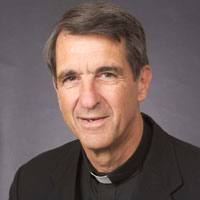 any topic with him, but it is especially wonderful to reflect with him on “the language of the liturgy.”  In this episode we discuss 2 books published by Ignatius Press, “Benedict XVI’s Reform” by Msgr. Nicola Bux and “The Voice of the Church at Prayer” by Fr. Uwe Michael Lang.  We discuss the primacy of place the Sacred Liturgy holds in our lives and the importance of offering it worthily.  Fr. Fessio helps us to understand the history of the reform, especially in its expression through our language.  We also discuss  the importance of elevating our understanding and action as opposed to “dumbing it down”.  We also look at the important role the use of Latin plays in enhancing the sense of the sacred in our sacramental expression.  Msgr. Bux’s book does an incredible job of closely examining the nature of  liturgical reform nurtured by Pope Benedict XVI, while Fr. Lang’s book offers a fascinating history of the language used in our celebrations.  Not just for scholars, these works offer invaluable insight into the heart of the liturgy we participate in.
any topic with him, but it is especially wonderful to reflect with him on “the language of the liturgy.”  In this episode we discuss 2 books published by Ignatius Press, “Benedict XVI’s Reform” by Msgr. Nicola Bux and “The Voice of the Church at Prayer” by Fr. Uwe Michael Lang.  We discuss the primacy of place the Sacred Liturgy holds in our lives and the importance of offering it worthily.  Fr. Fessio helps us to understand the history of the reform, especially in its expression through our language.  We also discuss  the importance of elevating our understanding and action as opposed to “dumbing it down”.  We also look at the important role the use of Latin plays in enhancing the sense of the sacred in our sacramental expression.  Msgr. Bux’s book does an incredible job of closely examining the nature of  liturgical reform nurtured by Pope Benedict XVI, while Fr. Lang’s book offers a fascinating history of the language used in our celebrations.  Not just for scholars, these works offer invaluable insight into the heart of the liturgy we participate in.
[powerpress]
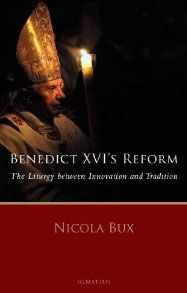 You can find it at ignatius.com
You can find it at ignatius.com
Nicola Bux is a priest of the Archdiocese of Bari and a professor of eastern liturgy and sacramental theology. He has studied and taught in Jerusalem and in Rome. He is a consultor to the Congregations for the Doctrine of the Faith and for the Causes of Saints and consultant of the international Catholic theological journal Communio. He was recently named a consultor to the Office of Liturgical Celebrations of the Supreme Pontiff.
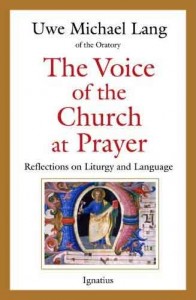 It also can be found here
It also can be found here
Uwe Michael Lang, a native of Germany, is a priest of the Congregation of the Oratory of St Philip Neri in London. At present, he is a staff member of the Congregation for Divine Worship and the Discipline of the Sacraments and teaches at the Pontifical Institute for Christian Archeology and at the Master’s program in “Architecture, Sacred Art and Liturgy” at the UniversitÀ Europea di Roma. In September 2008, he was appointed a Consultor to the Office for the Liturgical Celebrations of the Supreme Pontiff. His book Turning Towards the Lord (2nd edition, Ignatius, 2009), with a preface by then-Cardinal Joseph Ratzinger, has been published in several languages. Most recently, he has edited and contributed to the volume The Genius of the Roman Rite: Historical, Theological and Pastoral Perspectives on Catholic Liturgy (Hillenbrand Books, 2010).
Tags: catholic, catholic podcast, catholic prayer, cathollc spirituality
This entry was posted on Friday, July 13th, 2012 at 10:59 am
You can follow any responses to this entry through the RSS 2.0 feed.
[powerpress]Msgr. Esseff shares a poignant reflection on rejection, loss, suffering, and aloneness. 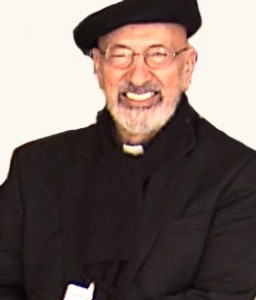  We experience various forms of suffering, but as it is said “success has a hundred mothers, failure is an orphanâ€.  Why is the cross so important to those who are united with Him?  Its in the cross that we experience His presence.  He shares a very compelling story he was given permission to share, which concerns a Sister,
 We experience various forms of suffering, but as it is said “success has a hundred mothers, failure is an orphanâ€.  Why is the cross so important to those who are united with Him?  Its in the cross that we experience His presence.  He shares a very compelling story he was given permission to share, which concerns a Sister, 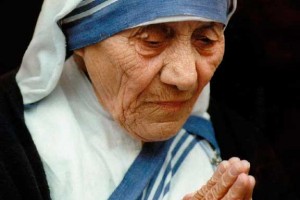 Mother Teresa, anger, forgiveness and love…it’s a heartbreaking tale…one where ultimately love prevails.  â€You’ll always have the gift and you’ll always have the cross.†– Bl. Mother Teresa
Mother Teresa, anger, forgiveness and love…it’s a heartbreaking tale…one where ultimately love prevails.  â€You’ll always have the gift and you’ll always have the cross.†– Bl. Mother Teresa
To obtain a copy of Msgr. Esseff’s book byvisiting here
Be sure to visit Msgr. Esseff’s website “Building a Kingdom of  Love”
Tags: blessed mother teresa, catholic, catholic podcast, catholic prayer, cathollc spirituality, forgiveness, John Esseff, missionaries of charity, mother teresa, suffering, the cross
This entry was posted on Tuesday, July 10th, 2012 at 8:26 am
You can follow any responses to this entry through the RSS 2.0 feed.
Heart of Hope Part 3 -Â What is Redemptive Suffering…using love and the energy of love to redirect pain as an intercessory prayer for another…how it makes sense and is no longer meaningless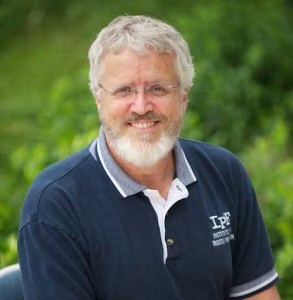
[powerpress]
Deacon James Keating, PhD, the director of Theological Formation for the Institute for Priestly Formation, located at Creighton University, in Omaha, is making available to â€Discerning Hearts†and all who listen, his series of programs entitled “The Heart of Hopeâ€.
This extraordinarily popular series explores the work of suffering in the Christian life and how God can use it to transform the heart of the individual and the world. 
The “Heart of Hope† tackles a very tough subject…the gift of suffering in the Christian life. Deacon Keating guides us well.
.
For more information on the “Institute of Priestly Formation†and for other material available by Deacon Keating, just click here
Don’t forget to pickup a copy of “Communion with Christ†, it is one of the best audio sets on prayer…ever!
Check out Deacon Keating’s “Discerning Heart†page
Tags: catholic, catholic podcast, catholic prayer, cathollc spirituality, Deacon James Keating, Deacon Keating, intercessory prayer, PhD, theological formation
This entry was posted on Monday, July 9th, 2012 at 10:22 am
You can follow any responses to this entry through the RSS 2.0 feed.
Sunday 1 October 2000 (excerpt taken from vatican.va)
2. “The precepts of the Lord give joy to the heart” (Responsorial Psalm). These words of the Responsorial Psalm clearly reflect the experience of Augustine Zhao Rong and his 119 companions, martyrs in China. The testimonies which have come down to us allow us to glimpse in them a state of mind marked by deep serenity and joy.
Today the Church is grateful to her Lord, who blesses her and bathes her in light with the radiant holiness of these sons and daughters of China. Is not the Holy Year the most appropriate moment to make their heroic witness shine resplendently? Young Ann Wang, a 14-year-old, withstood the threats of the torturers who invited her to apostatize. Ready for her beheading, she declared with a radiant face: “The door of heaven is open to all”, three times murmuring: “Jesus”. And 18-year-old Chi Zhuzi, cried out fearlessly to those who had just cut off his right arm and were preparing to flay him alive: “Every piece of my flesh, every drop of my blood will tell you that I am Christian”.
The other 85 Chinese men and women of every age and state, priests, religious and lay people, showed the same conviction and joy, sealing their unfailing fidelity to Christ and the Church with the gift of their lives. This occurred over the course of several centuries and in a complex and difficult era of China’s history. Today’s celebration is not the appropriate time to pass judgement on those historical periods: this can and should be done elsewhere. Today, with this solemn proclamation of holiness, the Church intends merely to recognize that those martyrs are an example of courage and consistency to us all, and that they honour the noble Chinese people.
Resplendent in this host of martyrs are also the 33 missionaries who left their land and sought to immerse themselves in the Chinese world, lovingly assimilating its features in the desire to proclaim Christ and to serve those people. Their tombs are there as if to signify their definitive belonging to China, which they deeply loved, although with their human limitations, and for which they spent all their energies. “We never wronged anyone”, Bishop Francis Fogolla replied to the governor who was preparing to strike him with his sword. “On the contrary, we have done good to many”. (In Chinese) God sends down happiness.
Tags: Augustine Zhao Rong, catholic, catholic podcast, catholic prayer, cathollc spirituality, china, Church in China HOMILY, martyrdom, martyrs, martyrs in China, Responsorial Psalm, St. Augustine Zhao Rong
This entry was posted on Monday, July 9th, 2012 at 8:09 am
You can follow any responses to this entry through the RSS 2.0 feed.
[powerpress] I had the opportunity to speak with Msgr. Esseff, who  is conducting a spiritual retreat for the Sisters of the 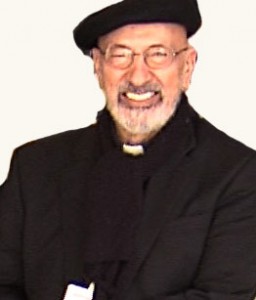 Missionaries of Charity in Sydney, Australia.  He shares with us the teachings from the first day, which is on the principal and foundation of prayer as taught by St. Ignatius of Loyola.
Missionaries of Charity in Sydney, Australia.  He shares with us the teachings from the first day, which is on the principal and foundation of prayer as taught by St. Ignatius of Loyola.
Msgr. Esseff begins by reflecting on the Awe of God and the difference between “being” and “becoming”. Â He shares a special memory of an experience that helped him to understand this which occurred when he was a young boy on his grandfather’s farm. Â Many years later, he would learn this was a basic teaching of St. Thomas Aquinas on the nature of God and creation. Â God is being and creation (including man) is becoming.
 With that foundation, Msgr. Esseff proceeds to teach us that all of our are becoming therefore because mankind has a soul and has the capacity for reflection, we have the power to glorify God. Â That is the first call we have, to glorify God. Â To often we focus on our selves and what serves our needs. Â St. Ignatius would say, that instead when faced with a decision or direction, each human being is called to discern, to ask whether if this is what God wants or is this is what I want. Â The key is to take ask the Father “What do you want us to do?” Â This is discernment at its basic level.
With that foundation, Msgr. Esseff proceeds to teach us that all of our are becoming therefore because mankind has a soul and has the capacity for reflection, we have the power to glorify God. Â That is the first call we have, to glorify God. Â To often we focus on our selves and what serves our needs. Â St. Ignatius would say, that instead when faced with a decision or direction, each human being is called to discern, to ask whether if this is what God wants or is this is what I want. Â The key is to take ask the Father “What do you want us to do?” Â This is discernment at its basic level.
To obtain a copy of Msgr. Esseff’s book byvisiting here
Be sure to visit Msgr. Esseff’s website “Building a Kingdom of  Love”
Tags: catholic, catholic podcast, catholic prayer, cathollc spirituality, Esseff, John Esseff, the Sisters of the Missionaries of Charity
This entry was posted on Sunday, July 8th, 2012 at 5:50 pm
You can follow any responses to this entry through the RSS 2.0 feed.
.
Priscilla and Aquila
Dear Brothers and Sisters,
Taking a new step in this type of portrait gallery of the first witnesses of the Christian faith which we began some weeks ago, today we take into consideration a married couple.
The couple in question are Priscilla and Aquila, who take their place, as we already mentioned briefly last Wednesday, in the sphere of numerous collaborators who gravitated around the Apostle Paul. Based on the information in our possession, this married couple played a very active role in the post-Paschal origins of the Church.
The names Aquila and Priscilla are Latin, but the man and woman who bear them were of Hebrew origin. At least Aquila, however, geographically came from the diaspora of northern Anatolia, which faces the Black Sea – in today’s Turkey -, while Priscilla was probably a Jewish woman from Rome (cf. Acts 18: 2).
However, it was from Rome that they reached Corinth, where Paul met them at the beginning of the 50s. There he became associated with them, as Luke tells us, practicing the same trade of making tents or large draperies for domestic use, and he was even welcomed into their home (cf. Acts 18: 3).
The reason they came to Corinth was the decision taken by the Emperor Claudius to expel from Rome the city’s Jewish residents. Concerning this event the Roman historian Suetonius tells us that the Hebrews were expelled because “they were rioting due to someone named Chrestus” (cf. “The Lives of the Twelve Caesars, Claudius”, n. 25).
One sees that he did not know the name well – instead of Christ he wrote “Chrestus” – and he had only a very confused idea of what had happened. In any case, there were internal discords within the Jewish community about the question if Jesus was the Christ. And for the Emperor these problems were the reason to simply expel all Jews from Rome.
One can deduce that the couple had already embraced the Christian faith in the 40s, and now they had found in Paul someone who not only shared with them this faith – that Jesus is the Christ – but who was also an Apostle, personally called by the Risen Lord.
Therefore, their first encounter is at Corinth, where they welcomed him into their house and worked together making tents.
In a second moment they transferred to Ephesus in Asia Minor. There they had a decisive role in completing the Christian formation of the Alexandrian Jew Apollo, who we spoke about last Wednesday.
Since he only knew the faith superficially, “Priscilla and Aquila… took him and expounded to him the way of God more accurately” (Acts 18: 26).
When Paul wrote the First Letter to the Corinthians from Ephesus, together with his own greeting he explicitly sent those of “Aquila and Prisca, together with the church in their house” (16: 19).
Hence, we come to know the most important role that this couple played in the environment of the primitive Church: that of welcoming in their own house the group of local Christians when they gathered to listen to the Word of God and to celebrate the Eucharist. It is exactly this type of gathering that in Greek is called “ekklesìa” – the Latin word is “ecclesia”, the Italian “chiesa” – which means convocation, assembly, gathering.
In the house of Aquila and Priscilla, therefore, the Church gathered, the convocation of Christ, which celebrates here the Sacred Mysteries.
Thus, we can see the very birth of the reality of the Church in the homes of believers. Christians, in fact, from the first part of the third century did not have their own places of worship. Initially it was the Jewish Synagogue, until the original symbiosis between the Old and New Testaments dissolved and the Church of the Gentiles was forced to give itself its own identity, always profoundly rooted in the Old Testament.
Then, after this “break”, they gathered in the homes of Christians that thus become “Church”. And finally, in the third century, true and proper buildings for Christian worship were born.
But here, in the first half of the first century and in the second century, the homes of Christians become a true and proper “Church”. As I said, together they read the Sacred Scripture and celebrate the Eucharist.
That was what used to happen, for example, at Corinth, where Paul mentioned a certain “Gaius, who is host to me and to the whole church” (Rom 16: 23), or at Laodicea, where the community gathered in the home of a certain Nympha (cf. Col 4: 15), or at Colossae, where the meeting took place in the house of a certain Archippus (cf. Phlm 2).
Having returned subsequently to Rome, Aquila and Priscilla continue to carry out this precious function also in the capital of the Empire.
In fact, Paul, writing to the Romans, sends this precise greeting: “Greet Prisca and Aquila, my fellow workers in Christ Jesus, who risked their necks for my life, to whom not only I but also all the churches of the Gentiles give thanks; greet also the church in their house” (Rom 16: 3-5).
What extraordinary praise for these two married persons in these words! And it is none other than Paul who extends it. He explicitly recognizes in them two true and important collaborators of his apostolate. (more…)
Tags: catholic, catholic podcast, catholic prayer, cathollc spirituality
This entry was posted on Sunday, July 8th, 2012 at 12:01 am
You can follow any responses to this entry through the RSS 2.0 feed.
It is always a delight to talk with Fr. Robert Spitzer!  His sure brilliance, combined with his infectious joy 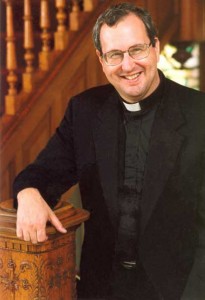 and good humor, is so engaging that any topic he leads us on becomes an adventure.  With “Cosmic Origins”, a soon to be released DVD, Fr. Spitzer and a group of physicists and academic heavyweights exploring modern scientific theories about how the universe came to exist.  I would call this a “mathematical apologetic”, which is so beautifully points to the greater “purpose” of our creator, that I couldn’t help but smile through the entire presentation.  Stunning, wonderful…and so much fun!
and good humor, is so engaging that any topic he leads us on becomes an adventure.  With “Cosmic Origins”, a soon to be released DVD, Fr. Spitzer and a group of physicists and academic heavyweights exploring modern scientific theories about how the universe came to exist.  I would call this a “mathematical apologetic”, which is so beautifully points to the greater “purpose” of our creator, that I couldn’t help but smile through the entire presentation.  Stunning, wonderful…and so much fun!
[powerpress]
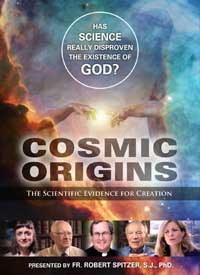 To learn more about this film and how you can arrange screenings for your parish or group go here
To learn more about this film and how you can arrange screenings for your parish or group go here
Cosmic Origins explains what we know about the beginning and nature of the universe, as well as its transcendent implications in clear, easy-to-understand terms. The 49-minute film weaves together a compelling narrative from academics and credentialed scientists pointing toward a very Catholic understanding of how the universe came to exist.
Cosmic Origins is distributed by Ignatius Press.
Tags: catholic, catholic podcast, catholic prayer, cathollc spirituality
This entry was posted on Friday, July 6th, 2012 at 9:55 am
You can follow any responses to this entry through the RSS 2.0 feed.
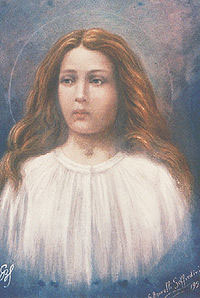
 MESSAGE OF JOHN PAUL II TO THE BISHOP OF ALBANO FOR THE CENTENARY OF THE DEATH OF ST. MARIA GORETTI from Vatican.va
MESSAGE OF JOHN PAUL II TO THE BISHOP OF ALBANO FOR THE CENTENARY OF THE DEATH OF ST. MARIA GORETTI from Vatican.va
To my Venerable Brother Bishop Agostino Vallini of Albano
1. A hundred years ago, on 6 July 1902, Maria Goretti died in the hospital at Nettuno, brutally stabbed the day before in the little village of Le Ferriere, in the Pontine Marshes. Her spiritual life, the strength of her faith, her ability to forgive her murderer have placed her among the best-loved saints of the 20th century. Appropriately, therefore, the Congregation of the Passion (C.P.), entrusted with the care of the shrine where the saint’s remains repose, wanted to celebrate the anniversary with special solemnity.
St Maria Goretti was a girl whom God’s Spirit endowed with the courage to stay faithful to her Christian vocation even to the point of making the supreme sacrifice of her life. Her tender age, her lack of education and the poverty of the environment in which she lived did not prevent grace from working its miracles in her. Indeed, it was precisely in these conditions that God’s special love for the lowly appeared. We are reminded of the words with which Jesus blesses the heavenly Father for revealing himself to children and the simple, rather than to the wise and learned of the world (cf. Mt 11,25).
It was rightly observed that St Maria Goretti’s martyrdom heralded what was to be known as the century of martyrs. It was in this perspective that at the end of the Great Jubilee of the Year 2000, I stressed that “this lively sense of repentance … has not prevented us from giving glory to the Lord for what he has done in every century, and in particular during the century which we have just left behind, by granting his Church a great host of saints and martyrs” (Novo Millennio ineunte, n. 7).
2. Maria Goretti, born in Corinaldo in The Marches on 16 October 1890, was soon obliged to emigrate with her family, and after sometime they arrived at Le Ferriere di Conca in the Pontine Marshes. Despite the hardships of poverty which even prevented her from going to school, little Maria lived in a serene and united family atmosphere, enlivened by Christian faith, in which the children felt welcomed as a gift and were taught by their parents self-respect and respect for others, as well as a sense of duty based on love of God. This enabled the little girl to grow up peacefully, nourishing her simple but deep faith. The Church has always recognized the role of the family as the first and fundamental place for the sanctification of its members, starting with the children.
In this family environment Maria assimilated steadfast trust in God’s provident love, which she showed in particular at the death of her father, who died of malaria. “Mother, be brave, God will help us”, the little girl was in the habit of saying in those difficult times, bravely reacting to her deep feeling of loss at her father’s death.
3. In the homily for her canonization, Pope Pius XII of venerable memory pointed to Maria Goretti as “the sweet little martyr of purity” (cf. Discorsi e Radiomessaggi, XII [1950-1951], 121), because she did not break God’s commandment in spite of being threatened by death.
What a shining example for young people! The non-commital mindset of much of our society and culture today sometimes has a struggle to understand the beauty and value of chastity. A high and noble perception of dignity, her own and that of others emerges from the behaviour of this young saint, was mirrored in her daily choices, giving them the fullness of human meaning. Is not there a very timely lesson in this? In a culture that idolizes the physical aspect of the relations between a man and a woman, the Church continues to defend and to champion the value of sexuality as a factor that involves every aspect of the person and must therefore be lived with an interior attitude of freedom and reciprocal respect, in the light of God’s original plan. With this outlook, a person discovers he or she is being given a gift and is called, in turn, to be a gift to the other. (more…)
Tags: catholic, catholic podcast, catholic prayer, cathollc spirituality, Church, forgiveness, Le Ferriere, Maria Goretti, pope john paul ii, saints, st. maria goretti
This entry was posted on Friday, July 6th, 2012 at 12:07 am
You can follow any responses to this entry through the RSS 2.0 feed.
Heart of Hope Part 2 -Â The agony of emotional suffering and opportunities for deeper union with Jesus; the reason for pastoral ministry
[powerpress]
Deacon James Keating, PhD, the director of Theological Formation for the Institute for Priestly Formation, located at Creighton University, in Omaha, is making available to â€Discerning Hearts†and all who listen, his series of programs entitled “The Heart of Hopeâ€.
This extraordinarily popular series explores the work of suffering in the Christian life and how God can use it to transform the heart of the individual and the world. 
The “Heart of Hope† tackles a very tough subject…the gift of suffering in the Christian life. Deacon Keating guides us well.
.
For more information on the “Institute of Priestly Formation†and for other material available by Deacon Keating, just click here
Don’t forget to pickup a copy of “Communion with Christ†, it is one of the best audio sets on prayer…ever!
Check out Deacon Keating’s “Discerning Heart†page
Tags: catholic, catholic podcast, catholic prayer, cathollc spirituality, Deacon James Keating, Deacon Keating, PhD, theological formation
This entry was posted on Monday, July 2nd, 2012 at 2:29 pm
You can follow any responses to this entry through the RSS 2.0 feed.


